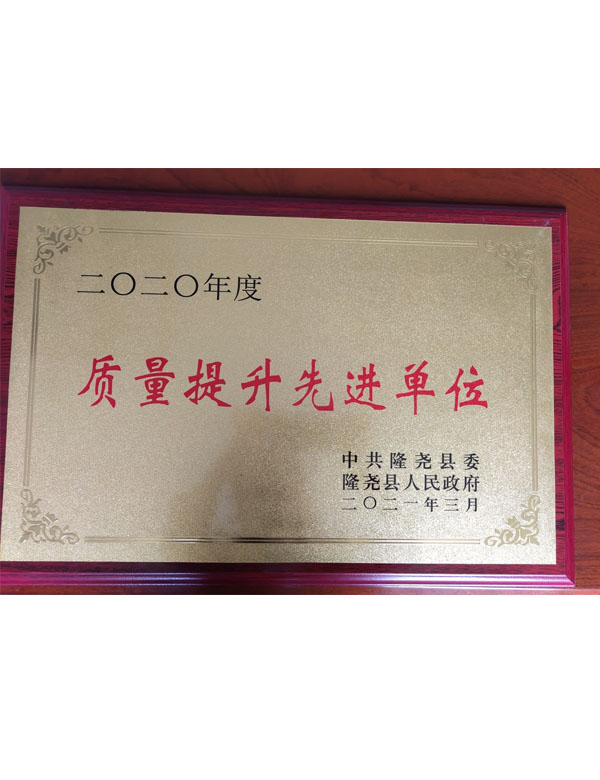Polyacrylamide Flocculant Applications in Effective Water Treatment Solutions
Polyacrylamide Flocculants in Water Treatment An Overview
Water treatment is a critical process in safeguarding public health and the environment. Among various chemicals used in this domain, polyacrylamide (PAM) has gained significant attention as an effective flocculant. This synthetic polymer plays a vital role in various water treatment applications due to its versatile properties and effectiveness in removing suspended solids, turbidity, and other contaminants from water. This article will explore the significance, mechanisms, and applications of polyacrylamide flocculants in water treatment.
What is Polyacrylamide?
Polyacrylamide is a water-soluble polymer derived from the polymerization of acrylamide monomers. It can be synthesized in various forms, such as anionic, cationic, or nonionic, depending on the intended application. The structure of polyacrylamide enables it to interact with charged particles suspended in water, making it an effective agent for flocculation.
Mechanisms of Flocculation
Flocculation is the process of aggregating fine particles into larger clusters or floes, which can then be easily removed from water through sedimentation or filtration. Polyacrylamide functions through several mechanisms
1. Charge Neutralization Many suspended particles in water carry a negative charge, leading to electrostatic repulsion. Cationic polyacrylamide can neutralize these charges, allowing particles to come closer together and form larger aggregates.
2. Bridging The polymer chains of polyacrylamide can physically entrap and bridge particles, promoting the formation of larger aggregates. This is particularly effective in the presence of high concentrations of suspended solids.
3. Hydration PAM is highly hydrophilic, ensuring it remains dispersed in water while interacting with suspended solids. This hydration promotes effective floc formation.
Applications in Water Treatment
polyacrylamide flocculant water treatment

Polyacrylamide flocculants are widely used in various water treatment processes, including
1. Municipal Wastewater Treatment PAM is commonly employed in municipal wastewater treatment plants to remove suspended solids and organic contaminants. Its use leads to improved sedimentation rates and reduced sludge volume, enhancing overall treatment efficiency.
2. Industrial Water Treatment In industries such as mining, paper manufacturing, and food processing, PAM is used to clarify process water by removing particulates and improving water reuse. Its effectiveness in handling high-solid loading conditions makes it a preferred choice for many industrial applications.
3. Drinking Water Treatment Polyacrylamide can also be utilized in the treatment of drinking water to remove turbidity and organic matter. Its ability to improve floc formation helps ensure that water meets safety standards for consumption.
4. Sludge Dewatering PAM is particularly effective in sludge dewatering operations, where its use can significantly reduce the volume of sludge generated. This not only minimizes disposal costs but also improves the overall sustainability of wastewater management.
Environmental Considerations
While polyacrylamide is effective in water treatment, it’s essential to consider its potential environmental impacts. The use of specific formulations, particularly cationic types, can be harmful to aquatic ecosystems if released into the environment. Therefore, proper dosing, monitoring, and adherence to regulatory standards are crucial to mitigate these risks.
Conclusion
Polyacrylamide flocculants play a significant role in modern water treatment processes. Their ability to enhance sedimentation, reduce sludge volume, and improve water clarity makes them invaluable across various applications, from municipal treatment to industrial processes. As the demand for clean water continues to rise, the strategic use of polyacrylamide will likely remain a key component in addressing global water challenges. Continuous research and development into safer formulations and more efficient application methods will further enhance their role in sustainable water management practices.
-
Pbtc Scale InhibitorPBTC: A Scale Protector for Industrial Water TreatmentNewsAug.05,2025
-
Organic Phosphonate: An Efficient Defender in the Field of Scale InhibitionNewsAug.05,2025
-
Hydrolyzed Polymaleic Anhydride: Green Pioneer in Scale Inhibition FieldNewsAug.05,2025
-
PAPEMP Polyamino Polyether Methylene Phosphonic Acid For SaleNewsAug.05,2025
-
Flocculant Water Treatment: A Pioneer in Purification in the Field of Water TreatmentNewsAug.05,2025
-
Benzyl Isothiazolinone: An Efficient and Broad-Spectrum Antibacterial Protective GuardNewsAug.05,2025





